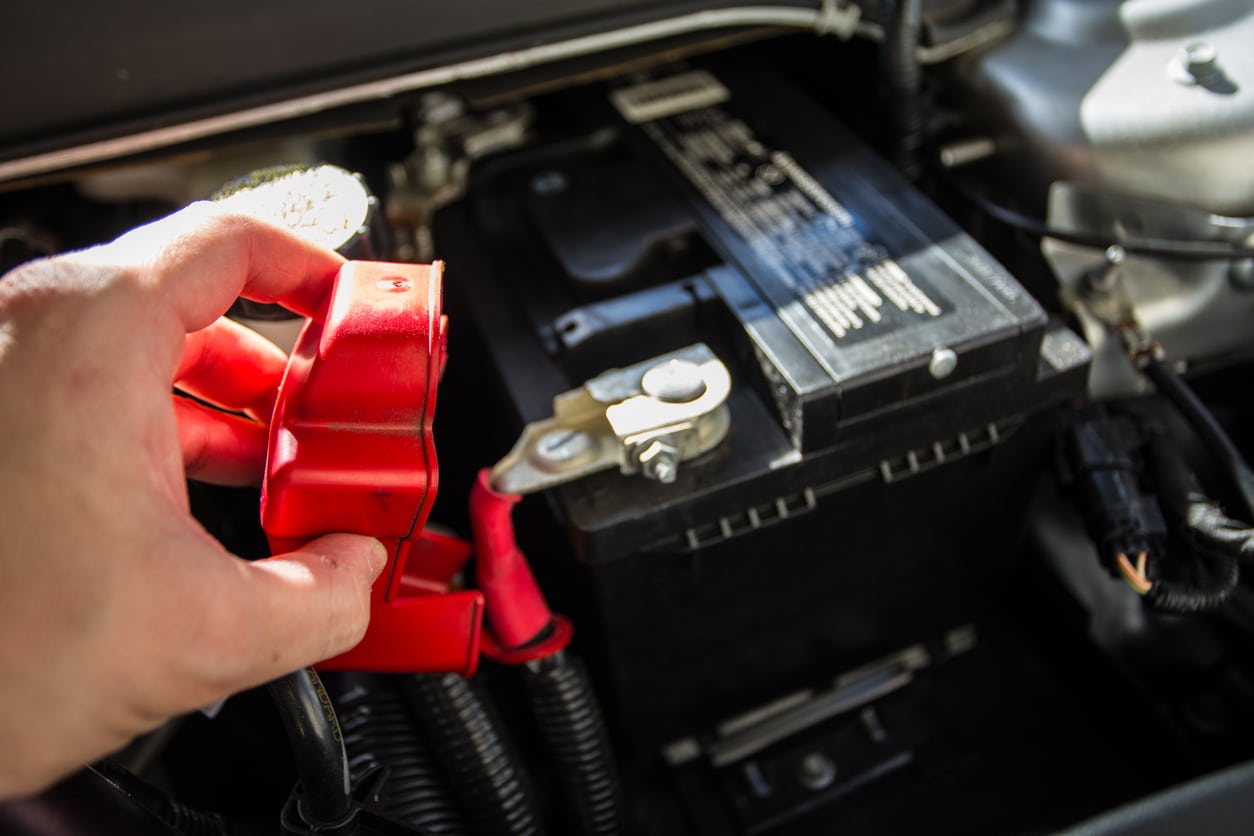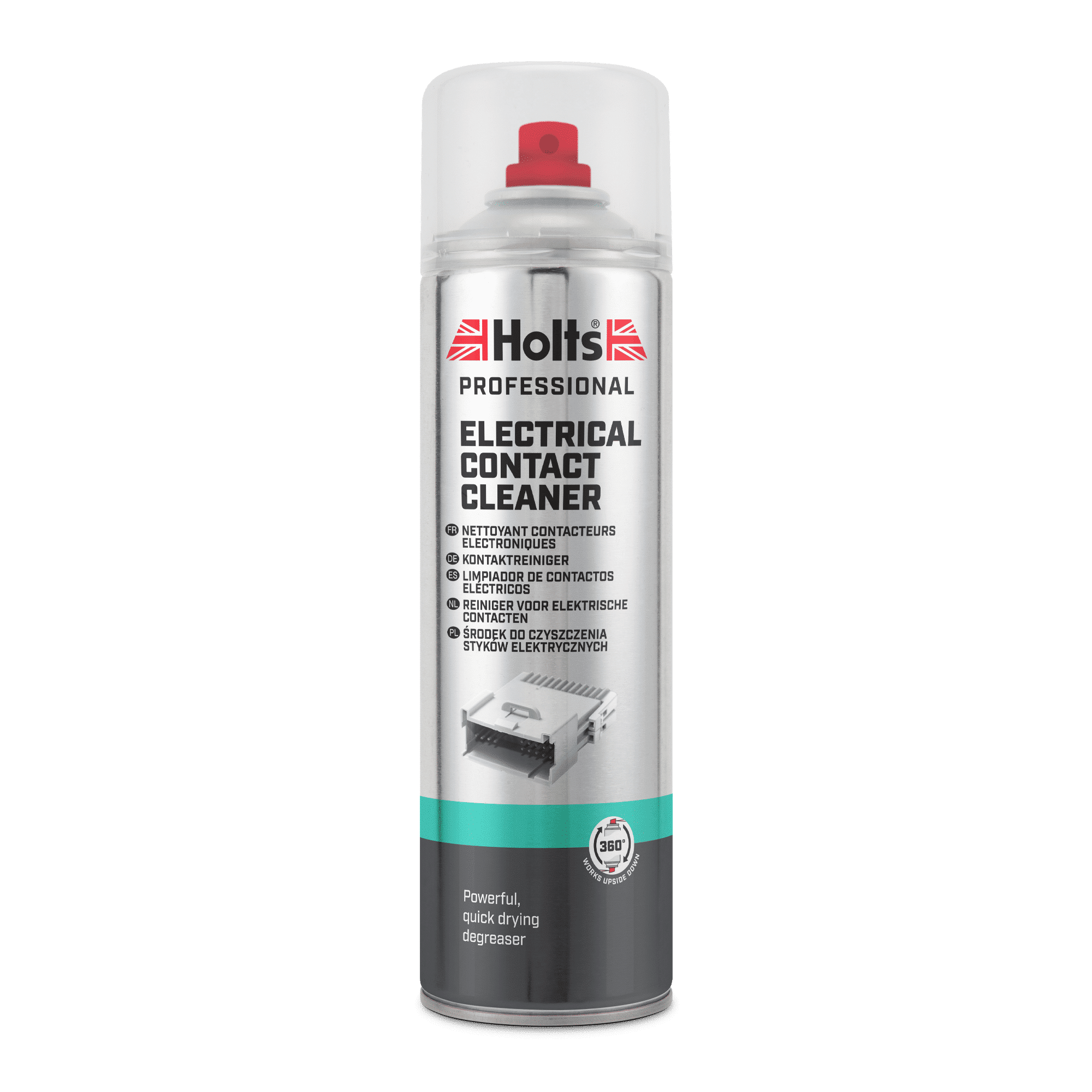Keeping your car clean is about more than just giving the paintwork a buff every so often. An important part of regular maintenance and upkeep, being thorough on the inside as well as the outside can prolong the life of components and ensure everything is kept in good working order.
One area that a lot of people don’t think to clean are electrical parts. With suitable tools and the right approach, you can make sure electrical components like cables, wires and connections are clean, dry, and free from dirt and oil without causing any damage.
From the battery to the ignition, we’ll show you how to safely clean electrical parts in your car in our how-to guide.
Quick Links
- Should You Clean Electrical Components in Your Car?
- What Are the Signs that Electrical Contacts Need Cleaning?
- How to Clean Electrics with Holts Electrical Contact Cleaner
Should You Clean Electrical Components in Your Car?
Dirt, grime, and dust can build up on electrical components and contact points, like the battery terminals, ignition, and spark plugs. Over time, this can interfere with electrical connections, leading to intermittent loss of power or engine performance. At worst, it could even cause a breakdown at the roadside.
Cleaning electrical components regularly reduces the risk of permanent damage and corrosion, safeguarding the performance of your car’s engine and systems. Of course, you can’t clean electrics with water, but there are products out there that can do the job safely – we’ll give you more information on this later in the guide.
What Are the Signs that Electrical Contacts Need Cleaning?
When dirt and corrosion cause electrical faults, it’s easy to mistake the symptoms for other problems under the bonnet. To help you spot the signs, here are a few things that might tell you when it’s time to clean the electrics:
- A warning light on the dashboard – Electrical faults often cause warning lights to appear on the dashboard, even if there isn’t a problem with the component in question. If after checking your car you can’t find any obvious faults, take a look at the condition of wiring and contact points.
- Intermittent engine performance – If your car’s alternator isn’t charging the battery as it should, you could experience poor engine performance including false starts, stalls, and a lack of power. Make sure your car’s battery connections are kept clean at all times to reduce the likelihood of electric-related engine problems.
- Dim headlights or other electrical faults – Have you noticed a reduction in visibility when driving with your headlights on at night? Perhaps your electric windows seem a little slower than usual? The problem could be a dirty or corroded connection, so check your wiring to find out what’s causing the issue.
How to Clean Electrics with Holts Electrical Contact Cleaner
Cleaning electrical parts can be tricky for a couple of reasons. Firstly, there’s a risk of causing damage if you use the wrong method of cleaning. Then there’s the issue of reaching electrical components in the first place. Wires, cables, and connections are often tucked away behind protective covers and other parts within the engine bay, making them hard to reach.
No matter though, because Holts has the perfect tool for the job. Our Electrical Contact Cleaner is considered one of the best electrics cleaners on the market, offering professional results in an easy to use can.
Specially formulated to remove grease, oil, and dirt, the cleaner quickly restores connectivity without any damage to sensitive electrical components. With its powerful cleaning action, the product gets to work instantly, removing tough corrosion and drying quickly, with no leftover residue.
And best of all, our Electrical Contact Cleaner can spray at any angle, even upside down. That means you can easily reach electrical components wherever they are around your car, without having to remove parts.
Sound good? Here’s how to use it:
- With the ignition off, locate the desired electrical components. You may need to disconnect some parts, like the battery terminals, to ensure best results. We’d recommend taking a picture of any electrics you want to disconnect before you start so you know how to put things back together again.
- Spray the cleaner directly on to the electrical contact point from a distance of around 10cm. The fast-acting formula will get to work instantly, quickly removing dirt and oil to restore electrical connectivity.
- Leave the product to dry – there’s no need to wipe. Our quick-drying, non-residue formula means you can quickly and safely clean electricals without the need for additional cleaning that could damage sensitive components.
And that’s it – you’re good to go. Holts Electrical Contact Cleaner is trusted by professionals, so you know it’s safe to use on your car. And because it’s so quick and easy to use, you can make it a part of your regular car maintenance routine.
We hope this guide helps you clean your car’s electrical systems with confidence. Click here for more professional-grade car maintenance products, or for more motoring tips and advice, be sure to visit the rest of the Holts blog. For our full range of DIY car maintenance products, head to the homepage today.



